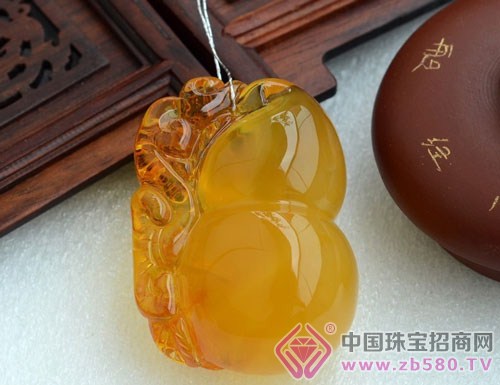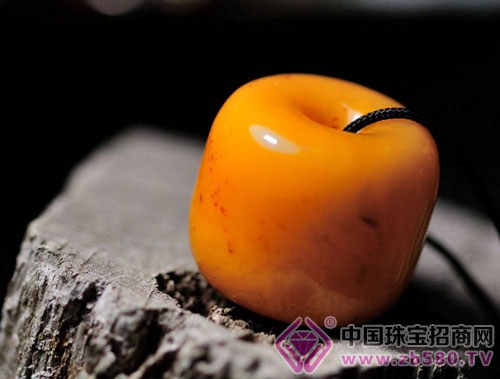What is amber, beeswax? Fans often ask us, is amber good, or is it good for beeswax? For this problem, we should first understand, what is amber, what is beeswax? Amber is a resin that is dropped from the coniferous plant, buried in the ground, and has been petrified by tens of millions of years of geological changes. In China alone, the name of beeswax is commonly referred to as amber in foreign countries. In China, beeswax is a kind of amber. It is customary to call opaque wax, transparent amber, amber honey. The wax looks different, both are very good, mainly depending on personal preference. Quality evaluation of amber and beeswax The standard of good amber is: 1, less internal impurities; 2, good light transmission; 3, uniform color, good oiliness. This is a very basic three aspects, but insects and plants are not suitable. The quality of insects and plants depends on the rarity of the inner wrap and the size of the wrap. The rarer the wrap, the larger the individual. The more such amber is precious. The standard of good beeswax is: 1. Less internal impurities; 2. The color is milk white, ivory white, chicken yellow, honey color, brown yellow, brown red, and uniform is good; 3, waxy dense, micro Light transmission is good; 4, the hand oil is good. This is the general judgment standard for good beeswax, and there are also special ones, such as white flower beeswax. To see if the texture is unique, the golden twisted honey depends on the proportion and distribution of beeswax and amber. Eyes are important In short, the purchase of amber beeswax is not all hard to follow these rules, because each piece of amber is unique, and it is related to the people who have a relationship. The main focus is on the eye, like, at first glance Good amber beeswax! Buy amber to guard against pressing amber Pressing amber differs from natural amber and optimized amber and is not recognized throughout the industry. It is usually made by low-temperature heating and pressurization of natural amber small pieces. This kind of amber is flooding the entire amber market, and many people who don't know much about amber have suffered a lot. Next, Xiaobian gives you a summary of the six characteristics of pressing amber. 1, dark red filaments In the process of pressing amber, the traces of the darker bloody particles are left behind, and the observation is more clearly observed under ultraviolet fluorescence. Natural amber sometimes bursts due to conditions such as temperature and humidity, and the resulting cracks are also oxidized to red, but they are dendritic along the crack rather than along the edges of the particles. 2. Animal and plant inclusions Zooming in under the microscope, it is generally impossible to see intact animal and plant inclusions inside the pressed amber. The main value of amber is reflected in its fossil value. In general, if the amber material with inclusions is not used to make pressed amber. 3, air bubbles There are a lot of bubbles in natural amber, and the bubbles that press amber are richer. Pressing amber In addition to the bubbles contained in amber itself, new bubbles form between the particles and the particles and during agitation. The bubbles are irregularly distributed in the whole piece of amber. They are dense and small. After heat treatment, they will also burst into a water lily-like amber flower. They are only very small and mostly oriented, which is very dense layer by layer. Amber is often subjected to directed pressure during condensation, resulting in tighter contact between the particles. 4, the flow structure Pressed amber exhibits flow characteristics significantly or not significantly. When amber is pressed and the melting time is long enough, the molecules will completely diffuse the internal blood vessels by convection, diffusion or by manual intervention. The boundaries between the particles are not obvious, and the interior looks very uniform. A flow configuration occurs in the pressed amber. However, the existence of this structure cannot be ruled out in natural amber, so this is only a reference basis for identifying pressed amber. 5, unmelted particles Solid amber particles that are not melted can be observed inside some pressed amber. They are sharp and angular, and the outline of the whole (or local) edge of the particle can be seen under the microscope. It is a unique inclusion feature of pressed amber - solid amber Particle inclusions. This is due to the fact that the pressed amber is unevenly heated or not fully melted during heating. 6, luminosity In most cases, natural amber has obvious white-blue, blue-green, and other inconsistent fluorescence under long-wave ultraviolet light, which is not obvious under short-wavelength. Pressed amber also has this fluorescent property. Under the UV fluorescent lamp, the edges and contours of the pressed amber are revealed, and the individual individual's binding and particle shape can be clearly seen. Observing the sample with dark red blood filaments, the boundary of the particles can be seen along the filament distributed.
It seems like everyone is looking for a way to enjoy the summer heat and stay comfortable at the same time. Fortunately, there are fabrics out there that can keep you from overheating during hot summer days.
So, what are the best cooling fabrics?
Fabrics that can have a cooling effect on your skin include silk or performance fabric for athletic wear.
In this article, let`s take a look at the seven best types of cooling fabrics for summer clothing, their pros and cons, and how you can use them to make beautiful summer outfits.
During warm summer days, there`s nothing better than a silky, cooling fabric that can make you feel weightless and breezy. Silk, rayon, and Performance Fabrics are some of the candidates that can have a cooling effect on your skin when worn during the summer.
Performance fabric is an umbrella term for a whole host of fabrics that are suitable for athletic wear.
They are most commonly made from a mix of polyester and nylon or spandex. This combination makes the fabric highly durable and stretchy, suitable for a whole range of athletic activities.
People assume that polyester and similar types of synthetic fibers are uncomfortable to wear during hot summer days, but that`s not necessarily the case for sportswear.
The reason why nearly every type of sportswear is made from a polyester blend is because of the fabric`s superior ability to wick away moisture and quick-drying ability, which keeps you dry during strenuous physical activities.
In addition, performance fabrics are also lightweight and stretchy to accommodate your body`s movements, so they often feel very airy and comfortable to wear.
Cooling Fabrics,Cool Touch Fabric,Cooler Fabric,Procool Fabric Wujiang Fuhua Fabric Co., Ltd , https://www.texfuhua.com

Fabrics That Says Cool In Heat
Performance Fabric